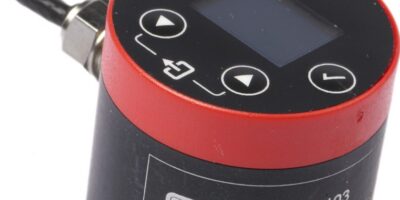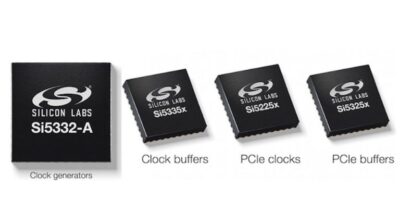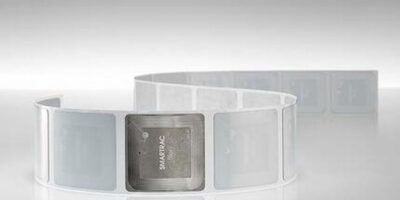Designed for space-sensitive factory maintenance, repair and operations (MRO) in smart manufacturing environments, the RS Pro infra red temperature sensor by RS Components is a low-cost non-contact voltage-output temperature sensor.
It has been designed to fit into tight spaces and show the measured temperature in- situ, so maintenance engineers do not have to return to the control room to check it.
The RS Pro infra red temperature sensor measures just 30mm deep and 31mm in diameter. It has a side-entry cable making it easy to mount in small spaces. The temperature is displayed on a built-in backlit OLED display, without the need for contact with the target surface. The sensor can be used where it is not possible to use contact probes, for example when the target is moving or inaccessible; it will fit between a wheel and the rim or hub of a disc brake.
The RS Pro infra red temperature sensor can measure surface temperatures from 0 to 1,000 degrees C to an accuracy of ±1.5 per cent of reading or ±1.5 degrees C, whichever is greater, and repeatability of ±0.5 per cent of reading or ±0.5 degrees C. Response time is just 250ms, allowing continuous monitoring by industrial process instrumentation via the DC voltage output.
The sensor provides simultaneous voltage and alarm outputs. The voltage output can be configured as 0 to 5V DC, 1.0 to 5V DC or 0 to 10V DC, with adjustable temperature range scaling, configured using built-in controls on the sensor. The open-collector alarm output offers adjustable temperature threshold and hysteresis.
The sensor is supplied set up to measure non-reflective surfaces such as paper, plastics, rubber, wood, tarmac, food, pharmaceuticals, organic materials and painted metal. To measure the temperature of reflective solid or liquid surfaces, the user can adjust emissivity settings between 0.20 and 1.00.
The RS PRO infra red temperature sensor is fitted with a 1m long cable, as standard. This can be extended using terminal blocks or connectors. An optional air purge collar helps keep the lens clean from smoke, fumes, dust, steam or other potential contaminants.
The device is IP65-rated.






